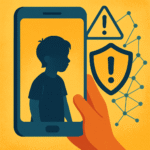Yesterday at breakfast my son negotiated his usual treaty over the family smartphone ban. He assured me he was “just checking the weather,” which of course required scrolling through seven videos of skateboarders falling off roofs. In between bites of toast I realised we’re all doing the same dance: we count minutes on devices like we’re rationing water in the desert. Yet a study published in June points out that it’s not how long teens stare at a screen that predicts anxiety, depression or even suicidal thoughts – it’s the compulsive way they use it. Researchers followed more than 4,000 kids and found that about 30 percent showed signs of social‑media addiction and 40 percent were hooked on video games by age 11, patterns that predicted poorer mental health.
That might be why the old rule of “one hour of screen time” never really worked. The JAMA study emphasised signs like obsessing over apps, feeling distressed when you can’t check your phone or using games to escape real problems. Tweens who answered “yes” to questions like “I spend a lot of time thinking about social media” were far more likely to report anxiety, aggression and suicidal thinking later on. Girls tended to get hooked on social platforms while boys gravitated towards video games, and kids from lower‑income families were at even greater risk. In other words, this is less a matter of discipline and more a matter of biology and design.
The adolescent brain is wired for risk and peer validation because the prefrontal cortex – the part that pumps the brakes on your dopamine‑hungry reward centre – doesn’t fully develop until your mid‑twenties. Meanwhile, every swipe, like, and comment delivers a little sugar rush. Addiction medicine experts liken social media to a slot machine: unpredictable rewards encourage endless pulls on the lever. Unlike alcohol or gambling, we can’t simply banish screens from our homes; opting out of modern society isn’t realistic. Psychiatrist Anna Lembke suggests treating screens like ultra‑processed foods: you don’t serve cake for breakfast, so you shouldn’t let your teen scroll TikTok in bed. The American Academy of Pediatrics recommends creating screen‑free zones, especially at dinner and in bedrooms, and thinking about which activities (playing outside, cooking, actual conversations) are being crowded out.
Egyptian officials recognise the stakes. Earlier this year the Ministry of Health convened a panel of university professors and mental‑health experts to review adolescent mental health initiatives. The spokesperson, Hossam Abdel Ghaffar, called addiction to social media and online games one of the most critical issues facing young people today and outlined a strategy that combines government and non‑governmental efforts. The presidential “Against Addiction” initiative includes early detection in schools and clubs, a national mental health and addiction platform, a hotline and hospital‑based services. The goal is to raise awareness about the psychological and physical consequences of digital addiction, reduce stigma and train healthcare professionals to treat it. Officials even describe addiction as a national security issue and are investing in prevention, treatment and rehabilitation. It’s encouraging to see a comprehensive approach from a country where 100,000 people have already used the ministry’s mental health platform.
So what does this mean around your own kitchen table? First, stop counting minutes and start watching patterns. Is your child using their phone to connect with friends or to escape reality? Do they melt down when the Wi‑Fi blips? Set clear, boring rules about when and where screens are allowed: no phones at dinner or in bedrooms, no doomscrolling before school. Create device‑free moments of discomfort so they learn to navigate boredom and awkwardness without swiping. When your teen protests, remember that withdrawal symptoms are real; addiction experts warn that behaviour may get worse before it gets better, but kids eventually rebound.
Second, model the behaviour you want to see. If you answer emails while telling them to get off Roblox, they’re going to call your bluff. Put your own phone away, tell them you’re doing it, and invite them into a shared activity. Teach them to question the way apps are designed to keep them hooked, and help them use digital tools for learning instead of mindless scrolling. Encourage them to develop offline skills like cooking, budgeting or even fixing a bicycle; real dopamine hits come from mastering something that isn’t feeding your data into an algorithm. When they do engage online, talk about critical thinking and media literacy; remind them that influencers are often selling something.
Finally, remember that you’re not fighting your teen. You’re fighting a business model built on harvesting attention. Get allies: other parents, schools, doctors and yes, sometimes even the government. Don’t be afraid to suggest a “dumb phone” or to use the resources offered by initiatives like Egypt’s national mental health platform. The goal isn’t to raise kids who live in caves. It’s to raise adults who can enjoy a slice of digital cake without inhaling the whole bakery.
Sources: Science News – “Screen addiction affects teens’ mental health. How to spot it, and help,” July 22 2025; Daily News Egypt – “Egypt reviews progress of ‘adolescent mental health’ campaigns,” Jan 4 2025.







Leave a Reply
You must be logged in to post a comment.